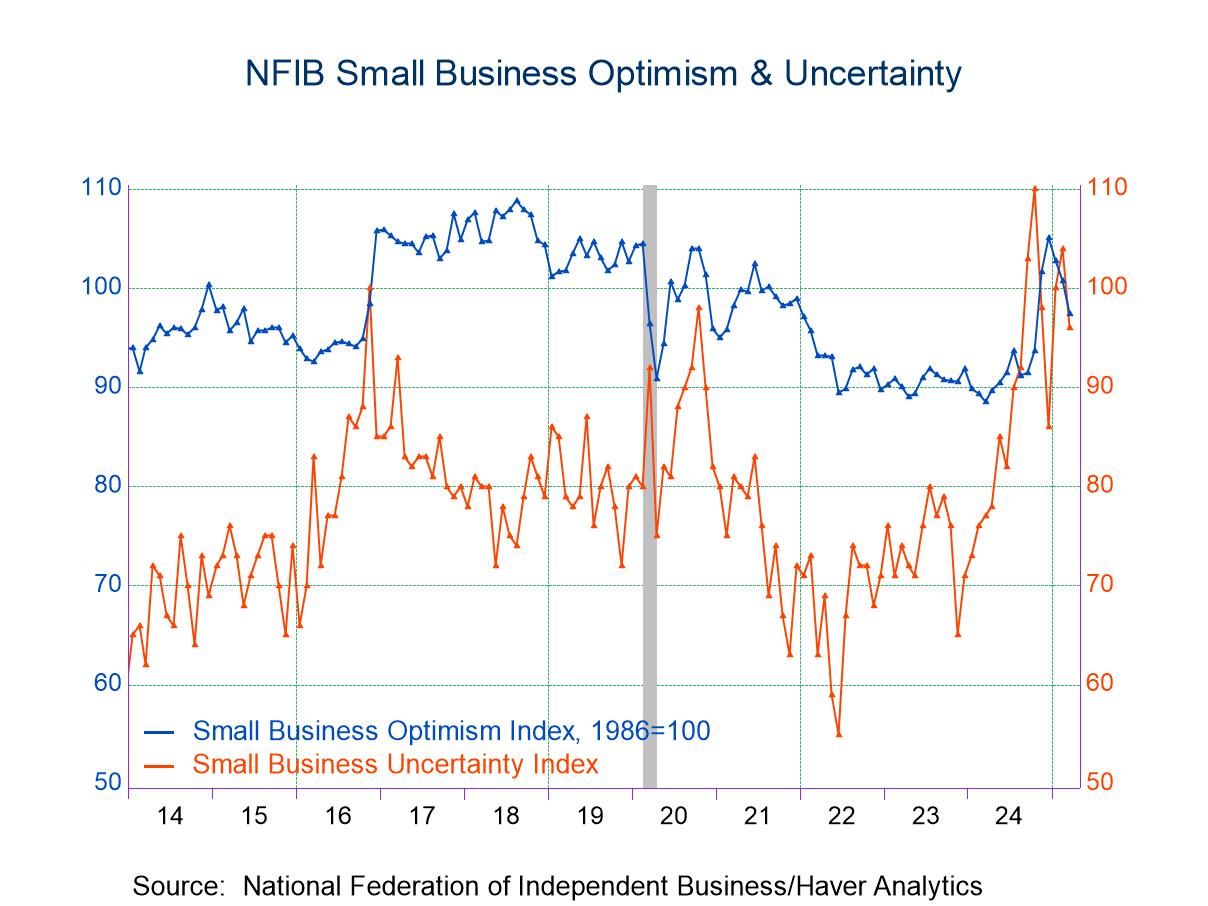U.S. Leading Economic Index Continues Its Decline in January
by:Tom Moeller
|in:Economy in Brief
Summary
- Half of leading components are negative.
- Coincident Indicator Index increases steadily.
- Lagging Economic Index reverses prior decline.


The U.S. Leading Economic Index fell 0.4% in January (-7.0% y/y) after a 0.2% December decline, revised from -0.1%, according to a report released today by The Conference Board. The index fell 0.4% in November, revised from -0.5%, and has declined in each month since December 2021. A 0.3% fall had been expected in the Action Economics Forecast Survey. January’s index level of 102.7 was the lowest since May 2020.
Five of the ten components made negative contributions to the leading index in January including the average workweek for production workers, ISM new orders index, building permits, the interest rate spread between the 10-Year Treasury rate & Fed funds rate and consumer expectations for business/economic conditions. Three of the index’s components made positive contributions including new orders for consumer goods, the leading credit index and the S&P 500. Initial claims for jobless insurance and nondefense capital goods orders had no effect on the leading index change.
The 0.2% increase (1.8% y/y) in the Coincident Economic Index in January followed an unrevised 0.2% December gain. November’s 0.4% rise was revised from 0.2%. Three of the components made positive contributions in January including personal income less transfers, payroll employment and real manufacturing & trade sales. Industrial production contributed negatively.
The Lagging Economic Index rose 0.4% (0.8% y/y) in January after declining 0.4% in December, revised from -0.2%. November’s 0.4% increase was revised from 0.5%. Four of the index’s seven components made positive contributions last month led by the average duration of unemployment, the change in the services CPI, the business inventory-to-sales ratio and the ratio of consumer installment credit-to-personal income. The six-month change in unit labor costs and C&I loans outstanding contributed negatively while banks’ prime rate was unchanged.
The ratio of the coincident index to the lagging index is also viewed as a leading indicator. This measure fell 0.3% (+1.1% y/y) in January after a 0.6% December rise.
The Conference Board figures are available in Haver's BCI database; the components are available there, and most are also in USECON. The expectations are in the AS1REPNA database. Visit the Conference Board's website for coverage of leading indicator series from around the world.


Tom Moeller
AuthorMore in Author Profile »Prior to joining Haver Analytics in 2000, Mr. Moeller worked as the Economist at Chancellor Capital Management from 1985 to 1999. There, he developed comprehensive economic forecasts and interpreted economic data for equity and fixed income portfolio managers. Also at Chancellor, Mr. Moeller worked as an equity analyst and was responsible for researching and rating companies in the economically sensitive automobile and housing industries for investment in Chancellor’s equity portfolio. Prior to joining Chancellor, Mr. Moeller was an Economist at Citibank from 1979 to 1984. He also analyzed pricing behavior in the metals industry for the Council on Wage and Price Stability in Washington, D.C. In 1999, Mr. Moeller received the award for most accurate forecast from the Forecasters' Club of New York. From 1990 to 1992 he was President of the New York Association for Business Economists. Mr. Moeller earned an M.B.A. in Finance from Fordham University, where he graduated in 1987. He holds a Bachelor of Arts in Economics from George Washington University.






 Asia
Asia